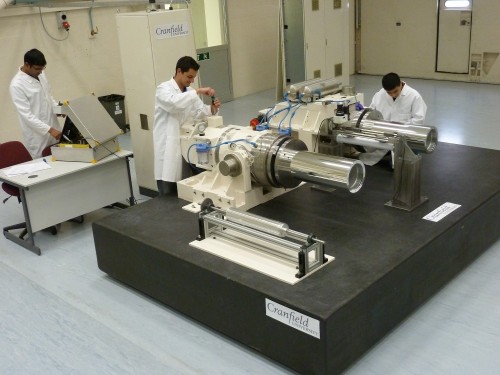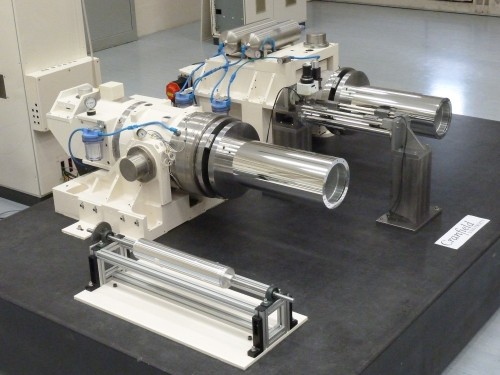Project Researchers: Betty Cabon, Sahil Chouhan, Amira T. El Araki, Miguel Camilleri, Maud Pfleger, Praveen Rao, Martyn Webber
Currently flexible displays are manufactured using a step-to-step stacking process, which is a time consuming and expensive process. The production of displays is set to be revolutionised and soon, displays will be made from very thin flexible glass substrates. Within approximately 5 years, displays can be expected to shift to being produced on plastic films. The age of thin glass and plastic based displays will transform how we think of them. A massive growth in use of low cost displays demands their production is made much more rapid using Reel to Reel (R2R) techniques. The R2R production techniques will, to the untrained eye, look like paper production systems, yet in reality they will be operating at levels of precision employed in the micro-electronics sector.
As part of Cranfield University’s Manufacturing and Materials MSc Programme 2012-2013, the Centre supported a 12 week group project to research the development of an ultra precision film steering test facility. The project was supervised by Prof Paul Shore and Mr Paul Morantz. Industrial collaborators included M-Solv, Fanuc and Heidenhain UK.
The aim of the research project was to understand, specify, develop and build an ultra precision 4 axis computer numerical control (CNC) thin film positioning facility, in an almost impossible time scale. The CNC controlled motion system had to be capable of positioning thin films of glass and/or plastics at high speed.
The group project team consisted of 7 students, each working in different areas of the project and by the end of the project period, a system was designed and an ultra precision film steering test facility was built. While the control system design and the majority of the hardware and software integration were completed, there was insufficient time to complete all the control system test activities.
As a result of this project, further research can be undertaken using this test facility to investigate R2R film steering. As part of the control system software a number of different control approaches could also be investigated.



